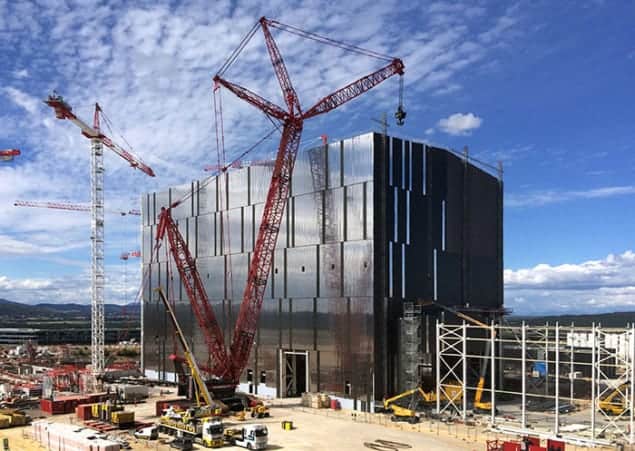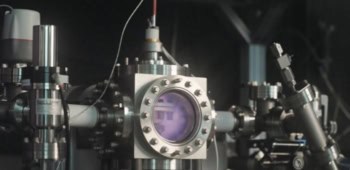
The ITER fusion reactor currently being built in France will achieve its “first plasma” in 2025, five years later than previously planned. The decision has been announced by the ITER Council, which also said that the project has so far successfully achieved all of its milestones on time or ahead of schedule. The decision to delay the project comes after French nuclear-physicist Bernard Bigot, former head of France’s Alternative Energies and Atomic Energy Commission, was brought in as ITER director-general in 2015 to shake up the organization and draft a credible schedule. Independent assessments of ITER, however, question whether the 2025 target can be met.
Expected to cost tens of billions of euros, the ITER fusion reactor is under construction in Cadarache, which is about 70 km north-west of Marseille. The project aims to show that it is technically feasible to get usable amounts of energy from a controlled fusion reaction. With the first plasma now expected in 2025, the first experiments using “burning” fusion fuel – a mixture of deuterium and tritium (D–T) – will have to wait until 2032.
Cash injection
Earlier this year, it was revealed that ITER managers were pushing for the five-year delay and had asked for an additional cash injection of €4.6bn. While the delay has been granted, the project’s seven partners – China, the EU, India, Japan, Russia, South Korea and the US – have announced they are unlikely to raise the additional finances. This means that completion of the project could slip even further beyond 2025, a worry that was expressed earlier this year in a report from the US Department of Energy (DOE) entitled “US Participation in the ITER Project”.
The DOE report and an independent assessment of ITER led by Albrecht Wagner, former head of the DESY particle-physics lab in Germany, have both pointed out that the new ITER schedule contains no contingency for unexpected complications. The DOE report says that 2025 for the first plasma and 2032 for D–T operations “are not realistically achievable”. To achieve the 2025 date, the DOE estimates that the US would need to spend $4.65bn, with annual contributions rising to $275m. More realistic, the DOE states, is for ITER to have its first plasma in 2028, at a cost for the US of $4.76bn and a maximum annual payment of $250m.
Technically feasible
Despite identifying “significant technical and management risks” with ITER, the DOE has recommended that the US should remain a partner in ITER until at least 2018 – at which point it will reassess its involvement. The report also states that ITER is the best way of demonstrating a sustained burning plasma and that the project is technically feasible.



